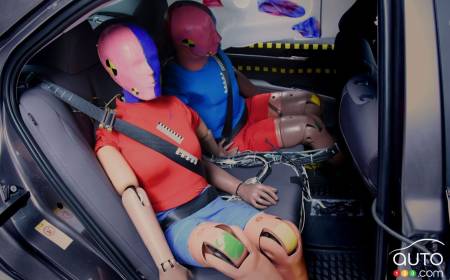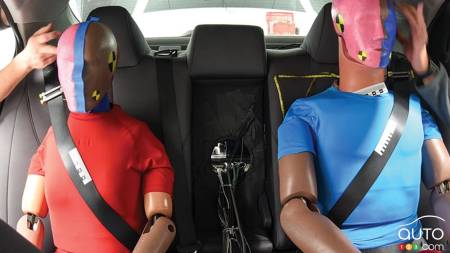Logic would seem to dictate that the front-row passengers are most vulnerable when a vehicle is involved in a front-end collision. But a new study by the IIHS (Institute for Highway Safety) shows that not to be the case. The organization recommends that manufacturers take a closer look at back-row passenger safety as a result of the frankly surprising results of the study.
The IIHS looked at 177 cases in which second-row passengers were seriously injured or killed when involved in a front-end collision. The surprising conclusion was that those passengers suffered greater injuries than the vehicle occupants sitting in front of them.
Just as troubling, the study found that the majority of fatalities recorded in such accidents happened when the impact was not all that severe, and that damage to the cabin was not such that it should have resulted in any deaths.
The worst blows suffered by rear-row passengers involved chest trauma (resulting in 22 injuries and 37 deaths). After examining photos, police reports and medical analyses, the IIHS concluded that most of the injuries were caused by the second-row seatbelts.
The next most-common injuries were blows to the head; 9 people were seriously injured and 18 back-seat passengers died.

"Manufacturers have put a lot of work into improving protection for drivers and front-seat passengers. Our moderate overlap front crash test and, more recently, our driver-side and passenger-side small overlap front tests are a big reason why. We hope a new evaluation will spur similar progress in the back seat.”
- IIHS President David Harkey
The IIHS did not issue any official recommendations to improve safety for those sitting in the back row of vehicles, but it did suggest that seatbelt tensioners and force limiters could reduce the number of injuries significantly. These systems are commonplace in front-row seatbelts. The addition of more airbags in that part of the cabin could also bring down the number of injuries and fatalities resulting from front-end collisions.
Ford and Mercedes-Benz have already introduced back-row airbags to help protect passengers involved in accidents. We have actually had occasion to test out the seatbelts with the recommended systems in place, and it’s clear to us that they cannot but help reduce the risk of injury.
"We're confident that vehicle manufacturers can find a way to solve this puzzle in the back seat just as they were able to do in the front.”
- David Harkey



